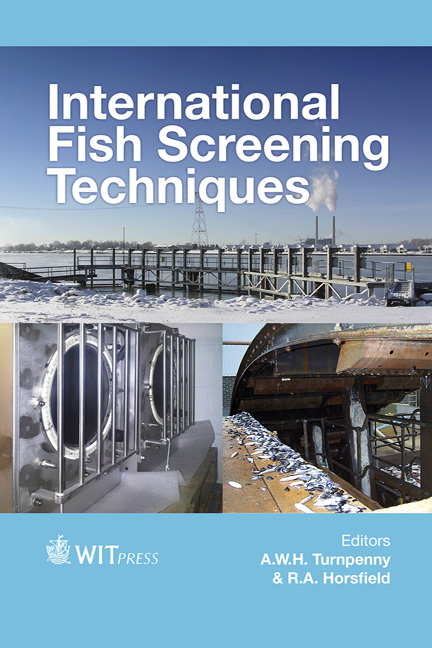Investigations Into The Response Of 0+ Twaite Shad (Alosa Fallax) To Ultrasound And Its Potential As An Entrainment Deterrent
Price
Free (open access)
Volume
71
Pages
11
Published
2014
Size
408 kb
Paper DOI
10.2495/978-1-84564-849-7/13
Copyright
WIT Press
Author(s)
N. Teague & S. C. Clough
Abstract
To protect site integrity and conserve populations the Habitats Directive has placed a requirement for all water intakes on SAC rivers and estuaries to provide adequate screening for all Annex II fish species including shad. Annex II species are also indicator species for the fish biological element of the Water Framework Directive. The protection of these species could require very fine mesh intake frontage physical screens which could present a variety of engineering, operational, and environmental difficulties at abstraction sites. Behavioural fish screens which evoke an avoidance response to stimuli are a potential retro-fit alternative. Acoustic screens are the most common and well understood behavioural screening technology. The hearing capability of fish is dependent upon the physiology of the individual species and consequently, the effectiveness of acoustic deterrents is also species dependent. Research suggests that clupeid fish, including the Alosids, can hear over a far greater range than other fish species and appear to be unique among fish in that they can detect ultrasound. There is therefore evidence to suggest that shad could be stimulated to elicit an avoidance response using ultrasonic acoustic stimuli. On this basis behavioural trials were undertaken with juvenile twaite shad to determine whether an avoidance response could be elicited and if so, which frequencies and sound pressure levels were most effective. Startle reactions of wild-caught shad to ultrasound were observed, particularly at a frequency of 45 kHz. Experimental avoidance trials suggested that there was potential for ultrasonic acoustic stimuli to be used as a deterrent to juvenile shad entrainment and that deployment of such a deterrent at potable water intakes could assist in the conservation of this species. Following initial experimental trials a deterrent
Keywords





